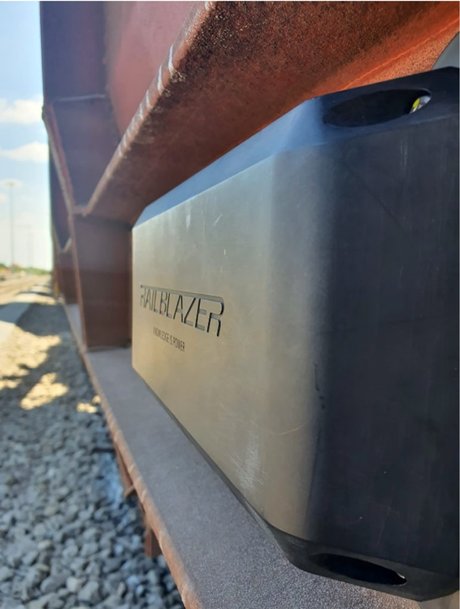www.industry-asia-pacific.com
07
'24
Written on Modified on
GNSS Location Precision for Freight Rail
Initially launched as GPS in the late 1970s for military use, GNSS (Global Navigation Satellite System) experienced significant advancements by 2000, allowing broader civilian applications.

This expansion included satellite networks like GLONASS, Galileo, and BeiDou/Compass. GNSS has become crucial in various civilian sectors, notably in IoT and asset management applications.
The railway market, particularly in locomotives and passenger trains, has seen a substantial adoption of GNSS technology, with approximately 250,000 devices installed. The forecast for GNSS deployment was around 30,000 devices per year; however, its integration into the rail freight market has been a game-changer, escalating the annual deployment figures to more than 60,000 devices.
GNSS Rail Industry and Freight Rail Use
GNSS is utilized in the railway industry for both safety and non-safety applications. Non-safety applications include passenger information systems, driver advisory applications, asset management, and operational applications for enhanced efficiency and tracking. The enhanced reliability and accuracy of GNSS has enabled its use in critical applications such as ERTMS/ETCS Level 2 and trackside worker protection in Europe.
In freight railways, GNSS plays a vital role in both operational efficiency and safety. It addresses challenges in operational efficiency, such as coordination and monitoring of loading and unloading activities and classification yard traffic management. Safety concerns are primarily in classification yards, where there is a lack of automatic traffic control systems, as well as during trips outside those yards. Determining train location and length are essential to ensuring level crossing safety. Precise GNSS can significantly enhance safety by providing accurate railcar location and trainset length data, preventing track usage conflicts, and alerting about potential train shifts to occupied crossings.
Precise GNSS Definition
Standard consumer-grade GPS receivers can pinpoint locations with an accuracy of 10 to 16 feet under clear sky conditions. However, this accuracy can decrease to 32 to 65 feet in real conditions with obstacles like buildings or trees.
The accuracy requirements in railway applications vary. Normal accuracy (~32 feet) suffices for fleet management, cargo monitoring and passenger systems. Higher accuracy (3.2 to 32 feet) is necessary for safety applications such as level crossing safety and train integrity. Special applications like door control systems and infrastructure surveying demand even greater accuracy (3.2 feet), often requiring expensive GPS receivers or supplementary positioning technologies like RFID.
Precise Railcar Positioning challenges

Most IoT devices are mounted on the side of the railcar. This positioning limits the view of the sky, exposes the device to signal reflections, and halves the number of accessible satellites, reducing signal strength. In addition, since the GPS operation is also constrained by energy consumption concerns, long satellite acquisition is limited.
To mitigate these challenges and meet customer requirements, such as exact location in classification yards, Trilogical’s RailBlazer railcar telematics solution has been specifically designed for precise location capabilities.
Using smart GNSS technology with advanced filtering algorithms, RailBlazer provides precise real-time location with exact track positioning, in high probability. The precise location technology includes a highly accurate location module that incorporates multiple GNSS constellations, a data correction process, and an algorithm to filter low-accuracy data. RailBlazer includes features that enhance integrity through built-in functionality and unique server-side algorithms, recognizing that accurate and reliable data is crucial to the railway industry.
www.trilogical.com

